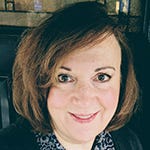Carbonite’s Whitlock: 'We Have a 100-Percent Recovery Rate'Carbonite’s Whitlock: 'We Have a 100-Percent Recovery Rate'
Carbonite's new channel chief talks "hybrid MSP" and the challenges of merging multiple programs.
November 7, 2017

Carbonite has grown past its consumer roots through acquisitions: cloud backup service EVault in December 2016, high-availability replication specialist Double-Take Software in January, and endpoint backup and recovery provider Datacastle in August. Together the products protect the data chain from endpoints to servers, physical and virtual, with on-premises and cloud storage options. That new breadth is reflected in a recently revamped website and partner program.
Still, the company faces a tough competitive environment across its target markets — Gartner’s DRaaS Magic Quadrant alone lists 23 major players, from specialists like Acronis and Datto to cloud service providers Expedient and Peak 10 + ViaWest to IBM, Microsoft and NTT. But Jon Whitlock, Carbonite’s VP of channel sales and marketing, says the company’s recent purchases, and the partners that came along for the ride, are helping to push its expanded product line out into new markets.

Carbonite’s Jon Whitlock
“Bringing those three technologies together helps form the basis for that broad portfolio that I don’t think you’re going to get from anyone else,” said Whitlock, who jumped to Carbonite from Kaspersky in July.
The company now has 1.5 million B2C and B2B customers and more than 160 petabytes of data under protection. Its offerings include a service to help migrate customer data among physical, virtual or cloud-based servers, including most flavors of Linux, and AWS, Azure, OpenStack and VMware vCloud or vSphere.
“I think Carbonite’s very unique in being able to provide that level of complete solutions to the marketplace,” said Whitlock. “I’m really excited about that and I tell you, it’s resonating incredibly well with the partner base.”
Channel Partners caught up with Carbonite at SpiceWorld last month, and Whitlock says he’s been doing road shows and events to educate partners on the full product portfolio. Here’s more from our recent conversation, edited for length and clarity.
Channel Partners: After acquisitions, you’re at around 1,000 employees? What percentage of revenue now is from enterprise customers?
Jon Whitlock: A little over one thousand employees, and 70 percent.
CP: Talk a little about your reseller and MSP programs.
JW: As we have grown our presence in the SMB and midmarket, it’s incredibly important for us to develop a program that can accommodate all partners. We wanted to focus on a couple of things as we designed the new program, which we launched just a couple of months ago.
One was ease of use — I have a long history working with the channel on both sides, as a partner – both as a VAR and MSP – and now also on the vendor side. It’s not easy. If you make a program too difficult, I’m probably either not going to participate, or I’m certainly not going to participate at the level you as a vendor want me to. So we really focused on …
… simplicity, being easy to understand. We’ve got two levels and very clear requirements in terms of graduating to the upper tier; we make it easy for partners to get in and start to work with us at the entry level. That was focus No. 1.
No. 2, we wanted to make sure that we put together a support infrastructure. Not only people – we’ve got a very comprehensive support team with our channel account managers, our inside sales folks, our field engineers and our marketing team – but also online tools.
We’ve picked up a number of tools and platforms that really help provide an expanded partner marketing center that is able to nurture campaigns, social media, webinars and other events and platforms. It’s available to our partners at no charge to help them take the next step in their marketing activities, so that’s pretty exciting as well.
For the reseller program, we put incentives in place to reward partners that invest in our program and in the relationship. We want to provide a basis for our partners to sell across the portfolio.
We also put in place a value-oriented program that provides additional incentives, like deal registration, as they become specialized in the different product portfolios. Again, the more they invest in us, and the more we invest together, the more money and incentives are available to them.
On the MSP side, it’s very similar, really. We want to make it easy. MSPs want to be able to manage their customers across a number of solution sets through a single portal, and that’s where we’ve been spending a lot of time.
The MSP space is growing globally at a rate that’s very exciting for us. We see huge opportunity there; backup, recovery and availability services need to be in every MSP’s portfolio.
CP: Would you say that growth is mostly a result of existing MSPs coming into the program, or do you see resellers and VARs starting to add these services?
JW: We certainly have a base of what I would call “pure MSPs,” where they have their own infrastructure, that’s all they do, and they’ve chosen Carbonite as the platform to offer their customers data-protection services. We certainly want to keep growing that base of our partner ecosystem. But you’re absolutely right — I think every VAR out there, or service provider, whatever you want to label them, will tell you that they’re also MSPs. They have to be.
We’re seeing a nice blend of those partners in our ecosystem, and we want to make sure we accommodate those different MSP models. Our management modules and APIs allow those, what I’ll call “hybrid partners,” to participate in a number of different ways. “One size” is not the right way to go.
CP: To pivot to the technology, there’s long been pushback against putting storage and backup and disaster recovery in one bucket. These are separate functions, and they need to be treated as such. Have you seen your technology evolve to be able to serve multiple purposes?
JW: Great question. Partners need a grid in terms of …
… “what’s your appetite for downtime?” Maybe a day is OK for certain things, hours is OK for others and seconds for mission-critical servers. And the need to be able to protect data in different environments, whether on-premises, or cloud, or hybrid.
What we’ve done is start to fill in every single one of those quadrants within a three-by-three grid. Whether it’s traditional backup, backup for endpoint devices – mobile, laptops, desktops – and server backup with the EVault line as well as disaster recovery, and now with high availability and disaster recovery as a service, we can provide immediate failover for customers so that they can really start to segment their environments.
We can put together a solution with our partners that meets a customer’s specific needs.
CP: One of the big selling points of DRaaS is ransomware protection. Have you seen partners use your technology to help recover customer data?
JW: Across the board. From the same products, home and office, we’ve had a 100-percent recovery rate. It’s not only the products but the support team as well, and I think that’s an important bit that we shouldn’t overlook. It’s one of the exciting things about being at Carbonite. Partners, when they get in trouble or if they need help, they want to know that they can get it.
CP: A 100-percent recovery rate is a selling point.
JW: Exactly. The EVault technology has absolutely helped many of our customers out of situations where it would have otherwise cost them a lot of money. And not only in terms of hopefully getting the encryption key back from the cyber criminals, but also from not being able to transact business.
CP: You’ve also recently acquired Double-Take Software and Datacastle. How have those channel programs and technologies come together?
JW: Double-Take was a wonderful augmentation to the portfolio because it allowed us to go from, “we got your data; in the case of a disaster or a failure, we can get you back,” but now with the Double-Take technology, we can provide that instant failover locally or over the wire. And we can provide remote access to a cloud version, so that clients can continue to work while they get their operations back up and running.
We’ve come out with a new solution where I can fail over to an appliance, where we’re replicating the data locally, and then that’s being backed up via the EVault solution into the cloud, so that if a primary fails, I now have a box, an appliance — that is my new server. It’s backed up to the cloud through Double-Take and automatically comes back up, right where it was, plus any changes that have happened during the time to repair.
And on top of that, Datacastle endpoint backup provides the ability to manage, deploy, back up and provide easy access to data, fully encrypted once it leaves the device, with technology embedded that allows for fast access to frequently or recently used files that are also stored in cache locally.
At the end of the day, a lot of data still resides on …
… our laptops. It’s amazing. We all thought we would get away from that, but I know I haven’t, so it’s a critical piece of the equation.
From a partner-program perspective, it’s been a lot of fun bringing those altogether. It’s been a lot of work, but at the same time, we designed the program around standardizing all of the different discounts and opportunities across the different portfolios.
The opportunity I have to seize with the team here is to make sure we’re providing a better experience for our partners than they had before.
CP: Where do you fall on the problem of a long channel tail?
JW: As we move up market, it’s interesting. You acquire new companies, you get a set of partners that come along, and they are going to vary in terms of their investment in any specific program. The way we’re going to be selective is making a program that allows for more partners to participate, but as they show interest and investment in it, we can reward that and provide additional focus.
We all have scarce resources, right, so we need to make sure we’re placing the right bets, and one of the things that we’re working on now are processes and programs to help us do that more objectively. We’re spending a lot of time on that piece.
CP: Automation and machine learning can help on that end.
JW: I’ll tell you, my experience is, no matter how hard you work, there will be your top performers and there will be the tail. That’s the nature of the channel. So then it’s just a matter of what kind of programs you can put in place to manage the tail, versus how you’re going to manage those top performers.
I am not going to sit here and tell you I’ve got it all figured out, but we’re having a lot of fun doing what we can to make the relationship as profitable for everyone as possible.
Read more about:
AgentsAbout the Author
You May Also Like


